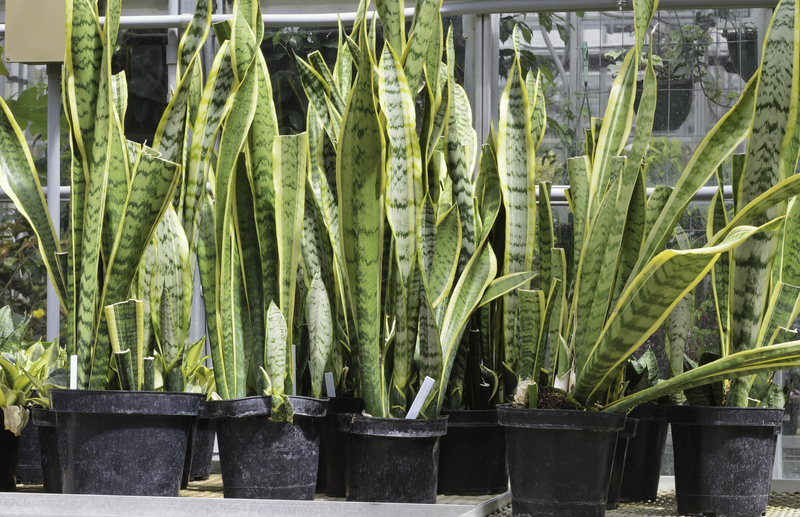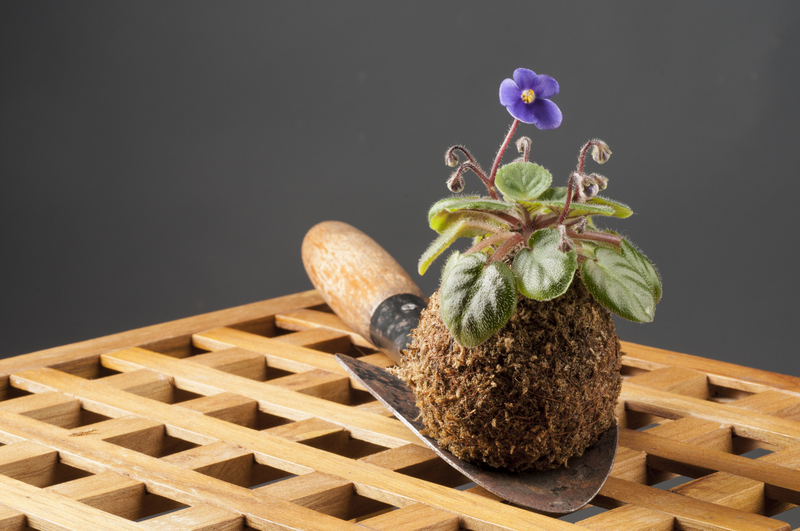Weed Control Mastery in 3 Essential Moves
Posted on 18/09/2025
Weed Control Mastery in 3 Essential Moves
Struggling to keep your garden pristine? Discover the three essential weed control strategies that experts swear by. In this ultimate guide, we reveal foolproof techniques to master weed management and maintain a lush, healthy landscape, whether you're a novice gardener or a seasoned pro.
Introduction to Weed Control Mastery
Every gardener faces the persistent challenge of weeds. These unwanted invaders compete with your prized plants for water, nutrients, and sunlight, often outpacing even the healthiest of crops. Achieving weed control mastery means understanding the enemy and utilizing highly effective methods for weed suppression and removal. If you're ready to eliminate weeds and cultivate a thriving garden, this article--filled with weed management tips, industry insights, and proven strategies--is for you.
Why is Weed Control Important?
- Improves yields: Weeds rob resources from your chosen plants, reducing yields in vegetable gardens or blooming power in flower beds.
- Enhances aesthetics: A weed-free landscape is visually appealing and increases your property value.
- Reduces pests and diseases: Many weeds act as hosts for diseases and insects, threatening your cultivated plants.
- Saves time and effort long-term: Early and efficient weed management prevents future infestations, making gardening easier overall.

1. Cultural Weed Control - The Foundation of Prevention
Cultural weed control refers to proactive techniques that limit weed establishment through management of your soil, crops, and environment. Effective cultural control is your first line of defense, ensuring that weeds never get a foothold. When properly implemented, it dramatically reduces the need for chemical or manual intervention. Below, we'll detail vital cultural practices as the cornerstone of weed control mastery.
Mulching: Nature's Blanket for Suppression
Mulch is more than decorative; it's a powerful weed suppressant. By covering bare soil with organic (straw, bark, leaves) or inorganic (plastic, landscape fabric) materials, you deprive weeds of the light needed to germinate.
- Organic mulches improve soil quality as they break down, offering a double benefit.
- Inorganic mulches provide longer-lasting, maintenance-free coverage.
Pro tip: Apply mulch at a thickness of 2-4 inches for optimal weed-blocking and moisture retention.
Competitive Planting & Dense Spacing
One of the most overlooked weed management strategies is simply outcompeting weeds. Plant ground covers, dense vegetables, or low-growing ornamentals closely. The resulting canopy shades the soil, making weed growth difficult. Choose vigorous, rapid-growing species for troublesome areas.
Crop Rotation & Cover Cropping
Alternating crops and sowing cover crops (like clover, rye, or buckwheat) during off-seasons disrupt the lifecycle of weeds. This prevents certain species from adapting and dominating bare soil. As cover crops are turned under, they also enrich soil, giving you a healthier base for future plantings.
2. Physical & Mechanical Control - Hands-On Mastery
When weeds break through your preventive efforts, physical removal is often necessary. Mechanical weed control is eco-friendly and highly effective, especially when combined with cultural practices. Master these manual techniques to keep invasive plants in check without resorting to chemicals.
Hand Weeding: Timing and Technique
No tool replaces the precision of hand weeding. For best results:
- Weed after rainfall, when soil is moist and roots come up easily.
- Remove the entire root system, especially for perennials like dandelion or bindweed.
- Weed before seeds mature to prevent re-infestation.
Pro tip: Make weeding a regular habit; spending just 10 minutes a day vastly reduces weed pressure compared to letting them mature.
Hoeing and Cultivation Tools
Garden hoes, stirrup hoes, and lightweight cultivators are perfect for slicing through shallow-rooted weeds. Regularly scuff the soil surface, taking care not to disturb desired plants' roots. Several tools are available:
- Stirrup hoes (oscillating hoes): Cut weeds just below the soil surface with minimal effort.
- Collinear hoes: Perfect for precise weeding in flower or vegetable rows.
- Flame weeders: Small propane torches that heat and kill weed seedlings on paths and driveways without disturbing soil.
Soil Solarization
This technique uses the sun's energy to superheat soil and kill weed seeds before planting. Cover bare soil with clear polyethylene during the hottest weeks of summer for 4-6 weeks. The resulting heat destroys seeds, roots, and some pathogens, setting the stage for a weed-free garden bed.
3. Chemical & Innovative Biological Control - Smart Solutions
While non-chemical approaches form the heart of integrated weed management, there are situations where herbicides or biological controls are appropriate. Used judiciously, these methods offer fast, targeted results--especially in large or persistent infestations.
Selective Herbicides and Safe Application
Gardeners should resort to herbicides sparingly, focusing on spot-treatments or challenging perennial weeds. Always follow label directions to protect yourself, pets, and pollinators. Choose:
- Pre-emergent herbicides: Applied before weed seeds germinate, creating a chemical barrier in the soil (e.g., corn gluten meal for lawns).
- Post-emergent herbicides: Used on visible weeds (e.g., glyphosate for driveways). Target only the weed to limit environmental impact.
Note: Organic options, like vinegar-based sprays, are increasingly available, but effectiveness varies. Test on a small area first.
Biological Weed Control - Nature's Helpers
This emerging field harnesses natural enemies--like insects or pathogens--that target specific weed species. For instance, certain beetles control invasive thistles, while fungi reduce the spread of noxious weeds. While options are currently limited for homeowners, this is a promising direction for sustainable weed population control.
Safe Disposal and Follow-Up
Whether pulling weeds or killing them chemically, never compost invasive or seed-laden weeds. Instead:
- Bag and dispose of them in the trash, not in compost bins.
- Consider solarizing infested soil before replanting.
- Monitor the area for regrowth and re-treat promptly.
Extra Tips for Maintaining Weed-Free Gardens Year-Round
Weed control mastery doesn't end at removal. Long-term success relies on persistence and quick intervention. Here are proven habits to maintain your weed-free landscape:
- Inspect regularly: Quick weekly checks catch new weeds before they establish a foothold.
- Plant cover crops during the off-season: These smother weeds and enrich soil.
- Keep lawns thick and healthy: Fertilize, overseed, and mow high to crowd out potential weeds.
- Maintain garden edges: Weeds often creep in from neglected borders.
- Sharpen and clean your tools: Sterilized tools prevent spreading weed seeds or diseases.

Frequently Asked Questions on Weed Control Mastery
Can I achieve weed control without chemicals?
Absolutely! Integrating preventive (mulching, dense planting), physical (hand weeding, cultivation), and organic solutions (vinegar, boiling water) can provide long-term control without synthetic herbicides.
What's the best time of year for weed management?
Early spring is prime for weed prevention strategies--apply mulch before weed seeds sprout and establish cover crops before winter. Summer and autumn are ideal for solarization, while year-round vigilance ensures weeds never get established.
How do I deal with weeds in lawns?
A thick, healthy lawn makes weed control easy. Mow at the highest setting for your grass type, overseed bare patches, and avoid overwatering. Spot-treat actively growing weeds with appropriate herbicides if necessary.
Are there eco-friendly herbicides?
Yes! Corn gluten meal, acetic acid (vinegar), and iron-based herbicides are increasingly available and effective on certain annual weeds. Always read and follow label directions for best results.
Conclusion: Your Path to Weed Control Mastery
Achieving weed control mastery is not about fighting a losing battle--it's about working smarter, not harder. By mastering these three essential weed management moves--cultural prevention, mechanical intervention, and targeted chemical or biological correction--you can maintain a lush, healthy, and beautiful garden or lawn. Combine these methods, remain vigilant, and soon weeds will no longer threaten your green sanctuary.
Transform your landscape by starting these weed control best practices today, and enjoy the satisfaction of a pristine, thriving yard for seasons to come.

